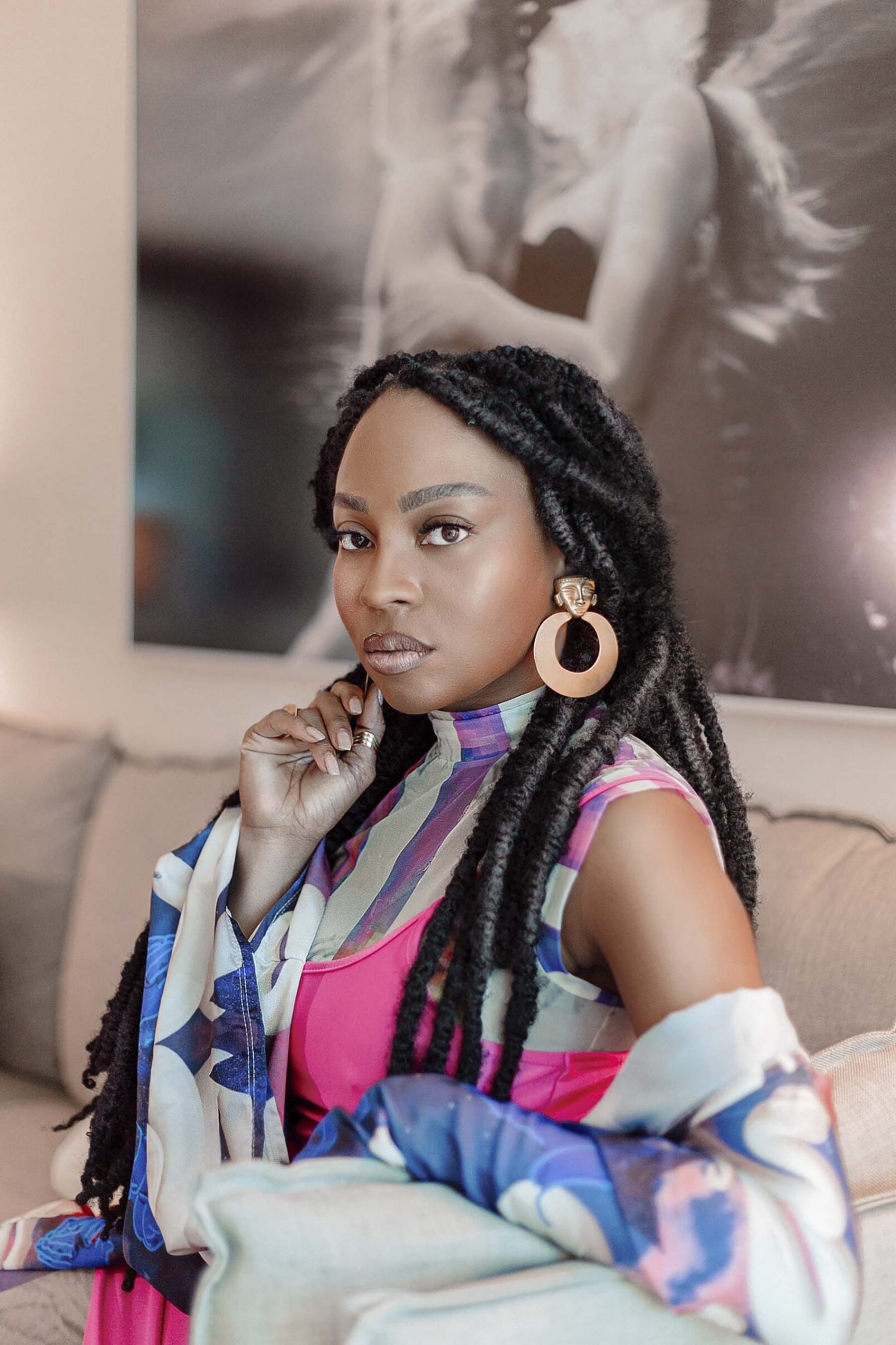GOYO’s Music & Artistry is about history & freedom.
Gloria “GOYO” Martinez is the genuine class act and force of artistry that the world has been waiting for. Her outlook on life and music isn’t just about making a sound, it’s about making an impact and breaking down the barriers that showed up for her and still show up for many Black artists today.
Her new album En Letra de Otro (which translates to “in someone else’s handwriting”) pays homage to the musical icons GOYO grew up listening to, while also telling rich stories that are rooted in her culture and identity as an Afro-Latina.
From humble beginnings in her hometown of Condoto, Colombia to performing on some of the music industry’s biggest global stages, GOYO shares with us the meaning behind her work, and why communicating with love will lead to change.
Hip-hop is a model. I understand the power that Hip-hop has. Hip-hop is music that allows us to be real and to be bold. Through hip-hop, we can mix a variety of sounds and rhythms and fuse genres.
– GOYO
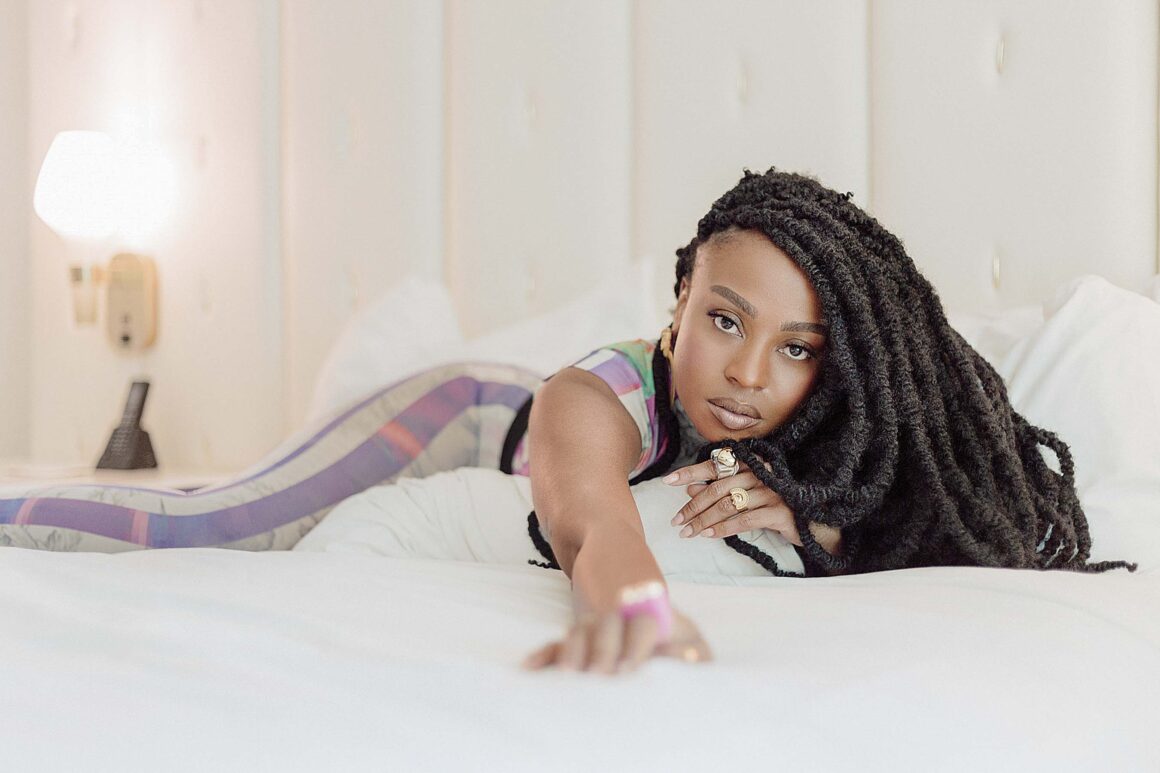
GOYO Interview
This is your time. In your current position, it looks like you’re ready to make your mark on the world. Why does now feel like the right time for the world to experience who GOYO is?
GOYO: My life experience right now is so beautiful. I am a woman who feels integral and complete. I’m a mother. I have a daughter. I love to compose and go to the studio to work. I’m very involved in the visuals of my group and how I look as an artist.
I’m basically a workaholic. This energy is the same when I need to express something or reach a certain place. I try to do this with art, so I aim to make my music with excellence. I try to be the best at whatever I do and give the best that I can give.
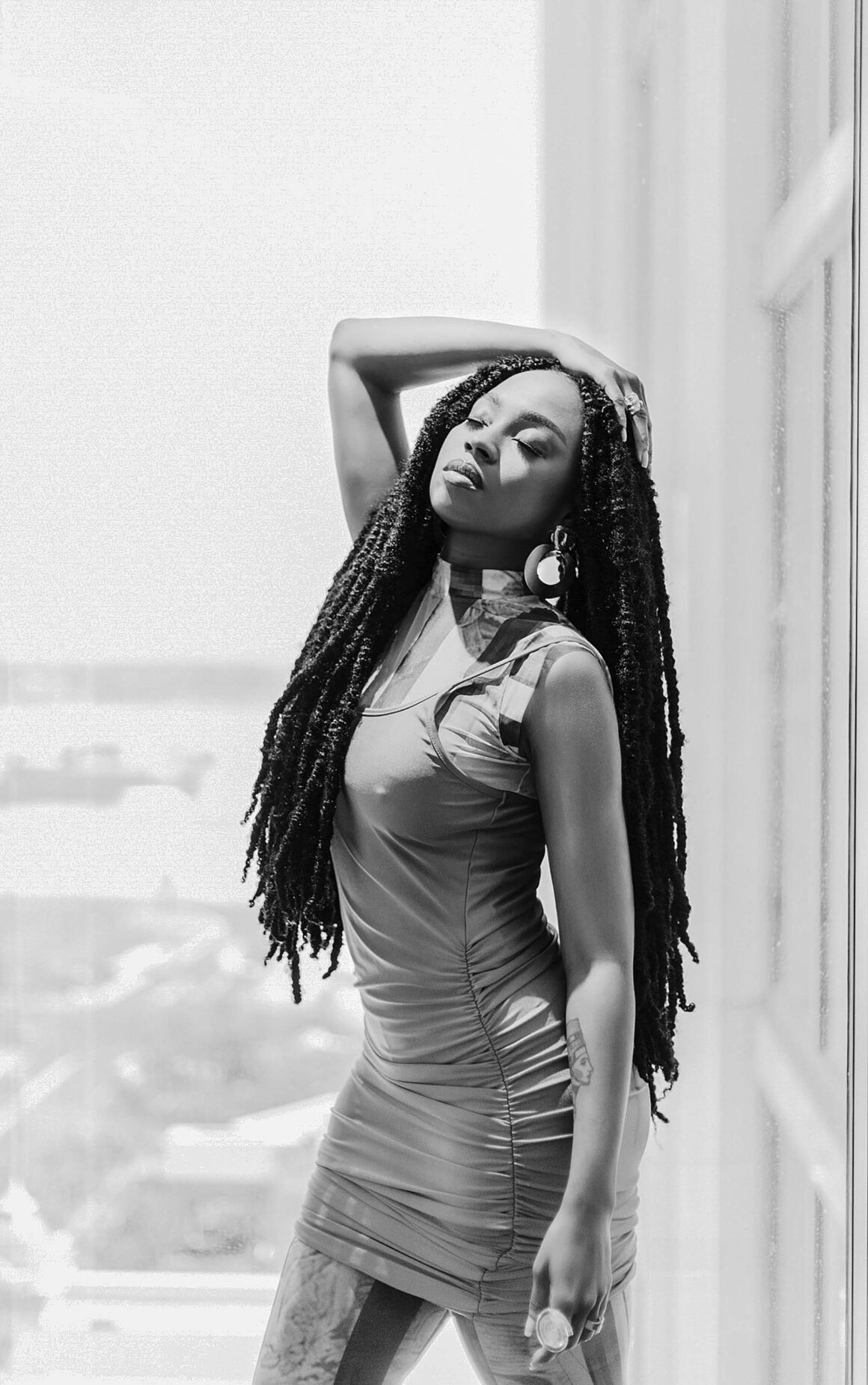
En Letra de Otro is a great album where you’ve reimagined classic songs in your own way. As your first solo project, what made you choose this direction for the album?
GOYO: This album had a lot to do with my younger self – the young Gloria who grew up listening to Lauryn Hill, The Fugees and real hip-hop at the same time that the surge of reggaeton was popular in Latin America and dancehall was booming from Panama.
The album has all of that in essence – it’s who I am. There’s a song I recorded with my mother called “Boga Boga” that I highly recommend you listen to. The song talks about a tradition where someone transports people from one side of the river to the other on a “champa” (small boat), and while they’re on that journey that person is telling stories and singing. I feel that energy.
I’m from Condoto, Colombia, a small place that sits by the river. I would go swim in the river before going to school and would meet my friends there. I had friends on the other side of the river that would meet us too and we’d all go to school together. Stories like that have been planted in me and they’re a part of my life.
Take for example the song “Lo Conoces” (translates to “do you know him”) which samples Tego Calderon’s “Pa’ Que Retozen” – I renamed the song because everyone knows him. Tego was a big inspiration to me.
His song was one of the first times I heard an artist speak about the Afro experience and our accolades. It didn’t matter that he is Afro-Boricua and I’m Afro-Colombian, I understood what he was saying and felt that same energy. Then, to move over to the pop genre with artists like Shakira – I recreated her song “Antología” with the intention to feel what I felt when I first heard that song in my youth. I wanted to feel the same energy of emotion in relation to the song with my first heartbreak.
Shakira’s lyrics resonated with me because they were real feelings that I felt at the time. So I rewrote the lyrics to better understand them. It wasn’t enough to just listen to those lyrics, I needed to understand exactly what she was saying by experiencing them.
This album is charged with a lot of experiences with my family like a documentary. It’s a great album because I did the best I could do with my team, which included my producers George Noriega and my brother, Slow. My team and I got together, and we worked everyday for two months.
Within two weeks, I had selected the songs and created my flows. People know that I’m a warm and inviting person, but when I’m working on a project, I completely disappear. With all due respect, it’s time to work!
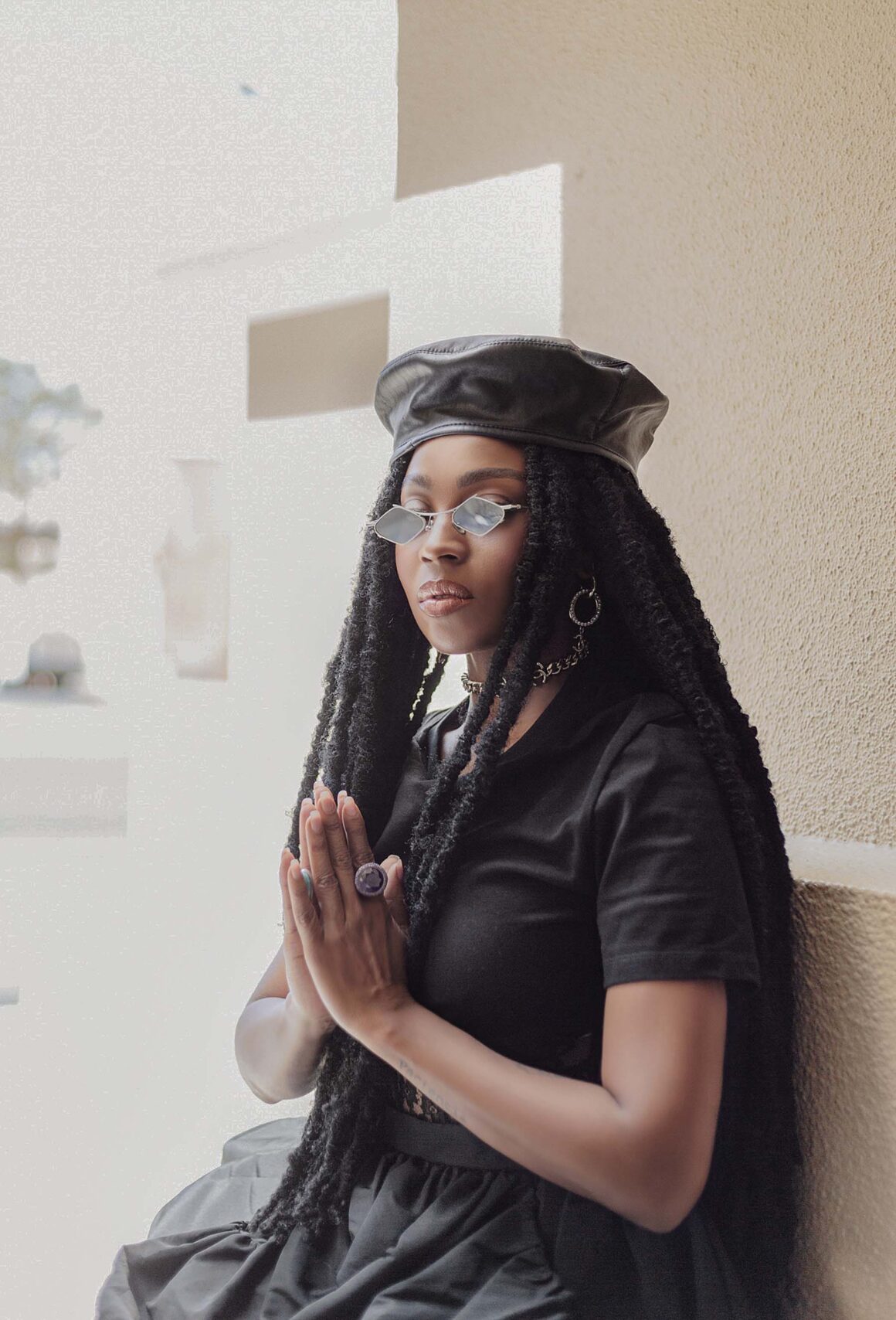
Talk to me about your approach to rapping on some of these songs that didn’t have original elements of hip-hop in them. What was your creative approach there?
GOYO: Hip-hop is a model. I understand the power that Hip-hop has. Hip-hop is music that allows us to be real and to be bold. Through hip-hop, we can mix a variety of sounds and rhythms and fuse genres. I like to be considered an artist because I’m not purely one sound or genre but rather someone who recognizes the power behind multiple sounds.
For example, when I sampled Ella Fitzgerald’s song “Summertime”, what I did was firstly respect the lyrics and the idea. I wanted to use that song to speak to all women as queens. The lyrics, “Summertime and the livin’ is easy/ Fish are jumpin’ and the cotton is high…” It made me think of viewing things from a balcony, where life looks simple, but I use that line instead to say “Queen, today I’m going to explain what’s going on. This is not a game of race. I was born with my body and you were born with a house. Who can equalize that balance?”
This is a song about discrimination. It’s about a human experience. But I always try to express it with love. In my life, everything that I’ve gone through, I’ve learned that you can’t teach through envy. I’m direct, but I convey messages with love, because when my heart speaks, it speaks with the intention to find change.
The album felt cathartic to make honestly and it helped me find a path to learning who GOYO really is to me. In a group, I have to leave my personal frame of mind and create music and stories that aren’t necessarily personal to me. This album allowed me to change that and truly speak from my heart.
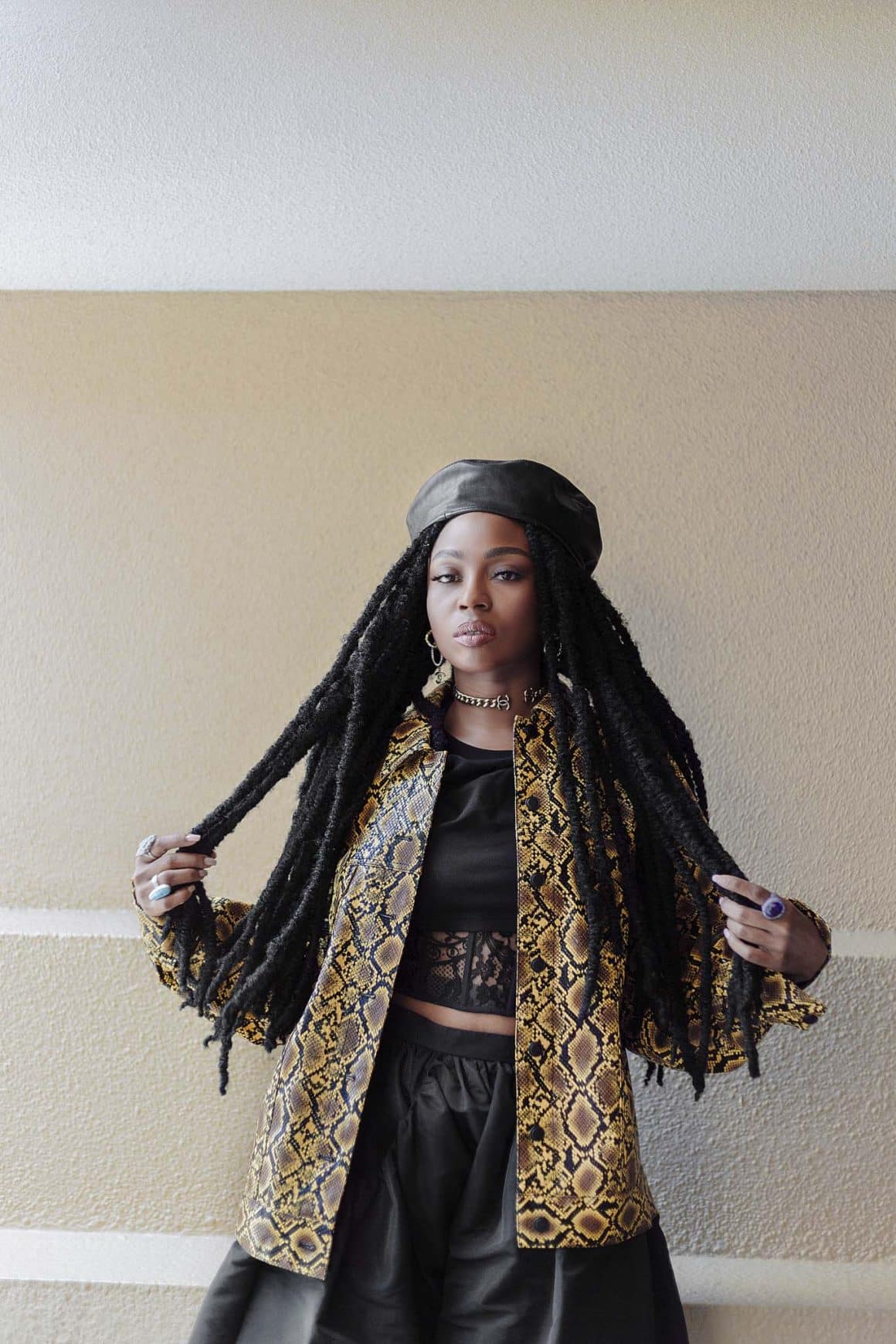
Your HBO special is vibrant and intimate at the same time. It really shows the audience a view into your artistry and how you incorporate your roots and culture into your work. What was your input in how the visuals came together for that project?
GOYO: I worked with a great team. When I first spoke with HBO about the project, they understood the concept. They knew that this was a reimagining of classic songs that were coming from my perspective. The “Letra de Otro”series has never been shot in a documentary-style format. It’s always been performance and music only, but I wanted to do something different. I wanted to tell my story, Gloria’s story, through this project. And it’s not so much about Gloria, it’s about the context – the context of what makes me who I am through my name, Condoto, my family, my aunts, etc.
I worked with director, Simon Brand, who took the time to learn about me and learn about Colombia. I took meetings with the production team and they were all so respectful, and they were all so good at their craft. From the production team to the stylists on how I wanted to look from creating the sets. The vision came to life.
I remember sharing that I had a fear of playing the guitar in front of people. It was a dream of mine, but I never had access to one. Once I was able to get one, I practiced it more like a hobby. I took this opportunity to perform “Perdoname” which I did alone with just the guitar. It was my opportunity to show some vulnerability and where I struggle with music too. I didn’t study music, I studied psychology. But I was able to learn from people I consider “life professors” who’ve taught me things in music that I didn’t know. My brother, in the same scenario, became a producer simply because he felt the music. He didn’t study it either.
We recognized our talents and expressed who we are through those talents – growing and learning as people but also as artists. That’s an incredible opportunity that music has offered me. With this project, everyone’s input was rooted in love and unity. You can see that in the work.
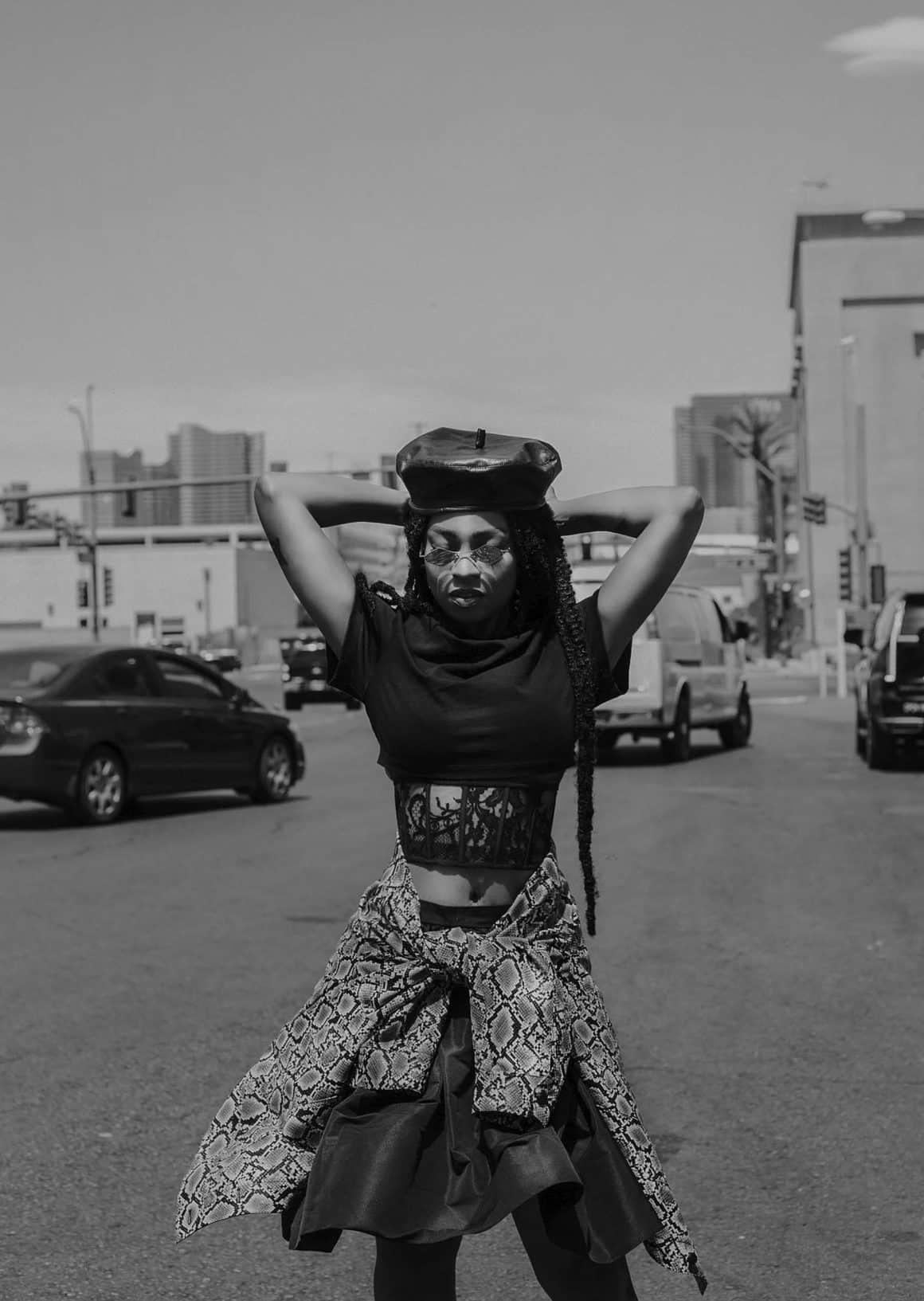
You mentioned your influences to include great artists like Celia Cruz, Tito Puente, Shakira, Tego Calderon, El General, and several others. Who else has inspired you musically? Are there any artists you admire that you think your fans would be surprised to know?
GOYO: I live inspired. I put value in every encounter I have with another person. I see all people as inspiration. There are people who inspire me to do things like they do and there are others who inspire me to do the opposite. As it pertains to hip-hop, I’m hugely inspired by Lauryn Hill, artists like Busta Rhymes and Outkast, and also Fat Joe who makes music that crosses generations and speaks to his experience of being Latino and living in America. I love when artists talk about their origins in their music.
I obviously love Celia Cruz and I’m also largely inspired by La India – an artist who said things in her music that I find myself saying in music today. I grew up listening to real women who spoke about themes that related to women.
I initially discovered you through your group, ChocQuibTown – a musical act that has done some amazing things. It’s great that you have their blessing to pursue solo efforts. What are some goals you have for yourself as a solo artist?
GOYO: I think it’s really important to speak directly. Life is not like a plain – it’s more like a mountain because it has its own ups and downs. The fact that I started my career in a group and helped establish that as a household name doesn’t mean that I can’t also pursue solo endeavors that exist parallel to what ChocquiBTown created. There have been people that have said, “You can’t do that. It’s too different.” But I know what’s important to me. I know what I want to say, and I want to do things genuinely. I want to show people that we have the ability to grow and live outside certain parameters. I feel like I broke down barriers to get to this point.
In 2020, I was the first Afro-Latina to be honored as one of the Leading Ladies of Entertainment by the Recording Academy for the Latin Grammys; I’m also the first Afro-Latina to be an official ambassador for Cadillac. I’m often the “first” in instances like these, but that’s not what excites me, because it reflects how few opportunities there are for women like me.
What I am proud of is the privilege I have to help open doors for these women and artists who are actively working to find their place too.
What should the world know about GOYO?
GOYO: I want people to see that a rural woman can have a global impact. And that’s a risky challenge, but I don’t care
about that. Life is full of risks. I look at risks as opportunities to make dreams come true.
STAY SOCIAL WITH GOYO
Instagram: @goyo
COVER
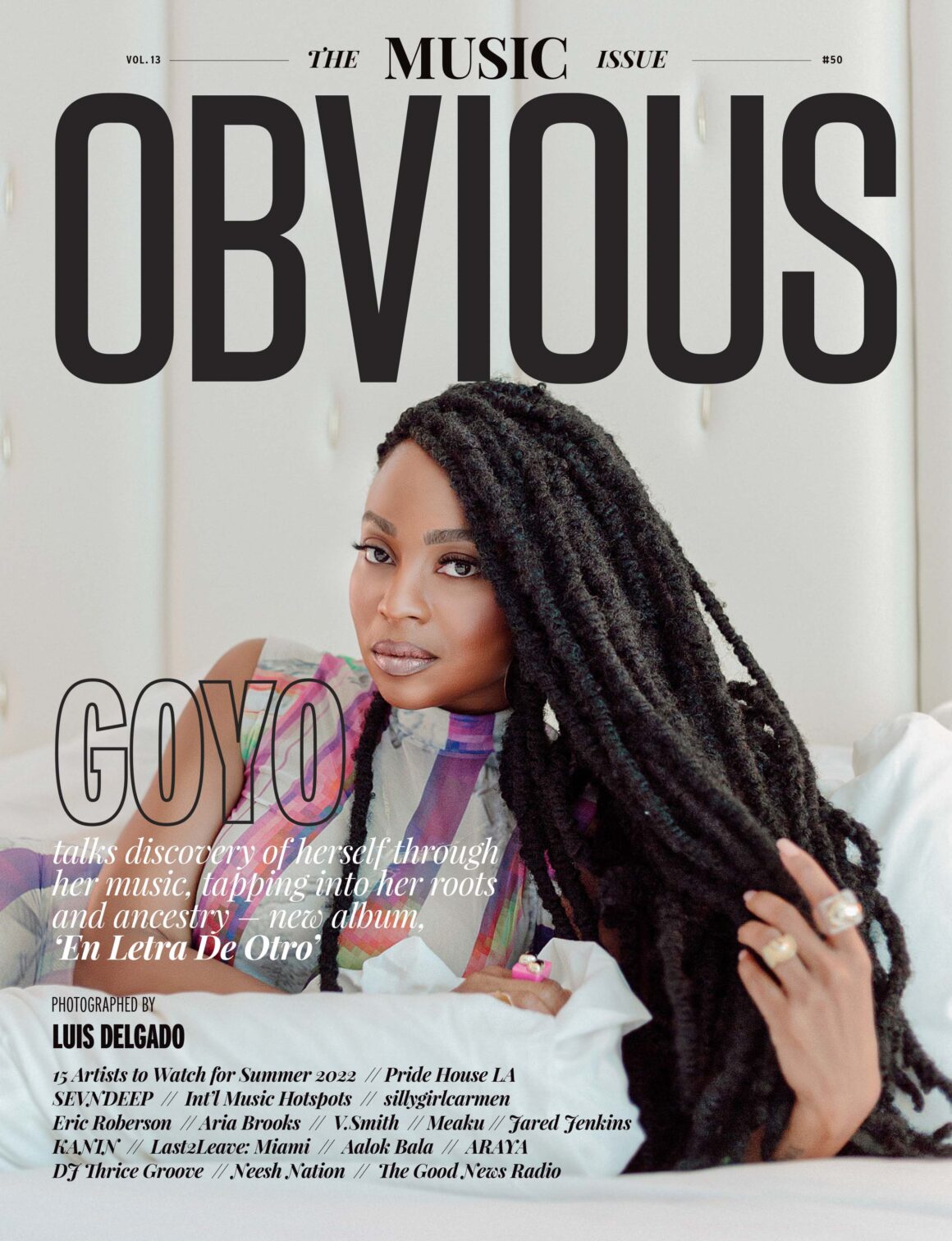
Available in print. Purchase here.
Photography: Luis Delgado (Robot Visión) @luisdelgadofot
Makeup Artist & Wardrobe Stylist: Johana Garcia @johagarciamakeup
Hair: Leiby Paredes @leibi_makeup
GOYO INTERVIEW IN SPANISH
Gloria “GOYO” Martínez es la destacada y portentosa artista que el mundo ha estado esperando. Su visión de la vida y de la música no consiste solo en crear un sonido, sino en causar un impacto y romper las barreras que aparecieron para ella y que en la actualidad siguen apareciendo para muchos artistas negros. Su nuevo álbum En Letra de Otro rinde homenaje a los íconos musicales que GOYO creció escuchando, a la vez que cuenta ricas historias enraizadas en su cultura e identidad como Afro-Latina. Desde sus humildes comienzos en su ciudad natal de Condoto, Colombia, hasta su actuación en algunos de los mayores escenarios mundiales de la industria musical, GOYO nos comparte el significado que hay detrás de su trabajo y el por qué comunicar con amor conducirá al cambio.
Este es tu momento. En tu posición actual, parece que estás preparada para dejar tu huella en el mundo. ¿Por qué parece que ahora es el momento adecuado para que el mundo experimente quién es GOYO?
En este momento, esa experiencia que es mi vida es muy hermosa. Soy una mujer que se siente íntegra y completa. Soy madre. Tengo una hija. Me encanta componer e ir al estudio a trabajar. Estoy muy implicada en los aspectos visuales de mi grupo y en mi aspecto como artista. Soy básicamente una adicta al trabajo. Esta energía es la misma cuando necesito expresar algo o llegar a un determinado lugar. Intento hacerlo con el arte, así que me propongo hacer mi música con excelencia. Intento ser la mejor en lo que hago y dar lo mejor que puedo dar.
En Letra de Otro es un gran álbum en el que has reimaginado canciones clásicas a tu manera. Al ser tu primer proyecto en solitario, ¿qué te hizo elegir este rumbo para el álbum?
Este álbum tiene mucho que ver con mi yo más joven, la joven Gloria que creció escuchando a Lauryn Hill, The Fugees y el verdadero hip-hop durante el auge del reggaeton en América Latina y mientras el dancehall florecía desde Panamá. El álbum tiene todo eso en esencia: es quien soy. Hay una canción que grabé con mi madre, llamada “Boga Boga”, que te recomiendo que escuches. La canción habla de una tradición en la que alguien transporta a la gente de un lado a otro del río en una “champa” (bote pequeño), y mientras están en ese viaje esa persona va contando historias y cantando. Siento esa energía. Soy de Condoto, Colombia, un pequeño lugar que se encuentra junto al río. Iba a nadar al río antes de ir a la escuela y me reunía con mis amigos allí. Tenía amigos al otro lado del río que también se reunían con nosotros y todos íbamos juntos a la escuela. Historias como esa han sido plantadas en mí y forman parte de mi vida.
Por ejemplo, a la canción “Lo Conoces”, que samplea la canción “Pa’ Que Retozen” de Tego Calderón, le cambié el nombre porque todo el mundo lo conoce. Tego fue una gran inspiración para mí. Su canción fue una de las primeras veces que escuché a un artista hablar de la experiencia Afro y de nuestros logros. No importaba que él fuera Afroboricua y yo Afrocolombiana, entendía lo que decía y sentía esa misma energía. Luego, para pasar al género pop con artistas como Shakira, recreé su canción “Antología” con la intención de sentir lo que sentí cuando escuché esa canción por primera vez en mi juventud. Quería, con esa canción, sentir la misma energía de esa emoción que estaba vinculada con mi primer desamor. La letra de Shakira resonó en mí porque eran sentimientos reales que sentí en ese momento. Así que reescribí la letra para entenderla mejor. No me bastaba con escuchar la letra, sino que necesitaba entender exactamente lo que ella estaba diciendo mediante la vivencia.
Este álbum está cargado de muchas experiencias con mi familia, como si fuera un documental. Es un gran álbum porque hice lo mejor que pude con mi equipo, que incluía a mis productores George Noriega y mi hermano, Slow. Mi equipo y yo nos reunimos y trabajamos todos los días durante dos meses. En dos semanas, había seleccionado las canciones y creado mis flows. La gente sabe que soy una persona cálida y acogedora, pero cuando estoy trabajando en un proyecto, desaparezco por completo. Con el debido respeto, ¡es hora de trabajar!
Háblame de tu enfoque a la hora de rapear en algunas de estas canciones que no tenían elementos originales de hip-hop. ¿Cuál fue tu abordaje creativo allí?
El hip-hop es un modelo. Entiendo el poder que tiene el hip-hop. El hip-hop es una música que nos permite ser reales y audaces. A través del hip-hop, podemos mezclar una variedad de sonidos y ritmos y fusionar géneros. Me gusta que me consideren una artista porque no soy puramente un sonido o un género, sino alguien que reconoce el poder que hay detrás de múltiples sonidos.
Por ejemplo, cuando sampleé la canción “Summertime” de Ella Fitzgerald, lo que hice fue, en primer lugar, respetar la letra y la idea. Quería utilizar esa canción para hablarles a todas las mujeres como reinas. La letra, “Summertime and the livin’ is easy/ Fish are jumpin’ and the cotton is high…“, me hizo pensar en ver las cosas desde un balcón, donde la vida parece sencilla, pero en lugar de eso utilizo esa línea para decir “Reina hoy voy a explicarte lo que pasa/ que no se trata esto un juego de raza/ se que un privilegio a todo el mundo no le pasa/ Nací con mi cuerpo/ y ustedes nacen con casa/ sí para los pobres nada alcanza/ Quien equilibra esa balanza…” Esta es una canción sobre la discriminación. Trata de una experiencia humana. Pero siempre intento expresarlo con amor. En mi vida, por todo lo que he pasado, he aprendido que no se puede enseñar a través de la envidia. Soy directa, pero transmito los mensajes con amor; porque cuando mi corazón habla, lo hace con la intención de encontrar el cambio.
El álbum me pareció, honestamente, catártico de hacer y me ayudó a encontrar un camino para aprender quién es realmente GOYO para mí. En un grupo, tengo que salir de mi estado de ánimo personal y crear música e historias que no me resultan necesariamente personales. Este álbum me permitió cambiar eso y hablar realmente desde mi corazón.
Tu especial de HBO Max es vibrante e íntimo al mismo tiempo. Realmente muestra al público una visión de tu arte y de cómo incorporas tus raíces y tu cultura a tu trabajo. ¿Cuál fue tu aporte en la elaboración de los elementos visuales de ese proyecto?
Trabajé con un gran equipo. Cuando hablé por primera vez con HBO sobre el proyecto, entendieron el concepto. Sabían que se trataba de una reimaginación de canciones clásicas desde mi perspectiva. La serie “Letra de Otro” nunca se ha rodado en un formato tipo documental. Siempre ha sido solo actuación y música, pero yo quería hacer algo diferente. Quería contar mi historia, la historia de Gloria, a través de este proyecto. Y no se trata tanto de Gloria sino del contexto: el contexto de lo que me hace ser quien soy a través de mi nombre, de Condoto, de mi familia, de mis tías, etc.
Trabajé con el director, Simon Brand, que se tomó el tiempo necesario para conocerme y aprender sobre Colombia. Me reuní con el equipo de producción y fueron muy respetuosos, y todos eran muy buenos en su oficio. Desde el equipo de producción y la creación de los escenarios, hasta los estilistas que entendieron cómo quería lucir. La visión cobró vida.
Recuerdo haber compartido que tenía miedo de tocar la guitarra delante de la gente. Era mi sueño, pero nunca tuve acceso a una. Una vez que la pude conseguir, practiqué como si fuera un hobby más que nada. Aproveché esta oportunidad para interpretar “Perdóname”, que hice solo con la guitarra. Fue mi oportunidad de mostrar algo de vulnerabilidad y dónde tengo dificultades con la música. No estudié música, sino psicología. Pero he podido aprender de personas que considero “profesores de la vida”, quienes me han enseñado cosas de la música que no sabía. Mi hermano, en la misma situación, se convirtió en productor simplemente porque sentía la música; tampoco la estudió. Reconocimos nuestros talentos y expresamos quiénes somos a través de esos talentos, creciendo y aprendiendo como personas pero también como artistas. La música me ha ofrecido una oportunidad increíble. En este proyecto, la aportación de todos se basó en el amor y la unidad. Eso se nota en el trabajo.
Has mencionado que entre tus influencias se encuentran grandes artistas como Celia Cruz, Tito Puente, Shakira, Tego Calderón, El General y varios más. ¿Quién más te ha inspirado musicalmente?
Vivo inspirada. Doy valor a cada encuentro que tengo con otra persona. Veo a todas las personas como inspiración. Hay personas que me inspiran a hacer cosas como ellas y hay otras que me inspiran a hacer lo contrario. En lo que respecta al hip-hop, me inspiran enormemente Lauryn Hill, artistas como Busta Rhymes y OutKast, y también Fat Joe, que hace música que atraviesa generaciones y habla de su experiencia de ser Latino y vivir en Estados Unidos. Me encanta cuando los artistas hablan de sus orígenes en su música.
Obviamente, me encanta Celia Cruz y también me inspira mucho La India, una artista que decía cosas en su música que yo misma digo en la música de hoy. Crecí escuchando a mujeres reales que hablaban de temas relacionados con las mujeres.
Te descubrí inicialmente a través de tu grupo, ChocQuibTown, una banda que ha hecho cosas increíbles. Es estupendo que cuentes con su bendición para seguir trabajando en solitario. ¿Cuáles son algunos de los objetivos que te has planteado como solista?
Creo que es muy importante hablar directamente. La vida no es plana, es más bien como una montaña porque tiene sus propios altibajos. El hecho de que haya empezado mi carrera en un grupo y que haya contribuido a establecerlo como un nombre familiar no significa que no pueda también dedicarme a proyectos en solitario que existan en paralelo a lo que ChocquiBTown creó. Hubo gente que dijo: “No puedes hacer eso. Es demasiado diferente”. Pero yo sé lo que es importante para mí. Sé lo que quiero decir, y quiero hacer las cosas de forma genuina. Quiero mostrar a la gente que tenemos la capacidad de crecer y vivir fuera de ciertos parámetros. Siento que he roto barreras para llegar a este punto. En 2020, fui la primera Afrolatina en ser honrada como una de las Leading Ladies of Entertainment por The Recording Academy para los Latin Grammy; también soy la primera Afrolatina en ser embajadora oficial de Cadillac. En casos como estos, a menudo soy la “primera”; pero eso no es lo que me emociona, porque refleja las pocas oportunidades que hay para las mujeres como yo. Lo que me enorgullece es el privilegio que tengo de ayudar a abrir puertas a estas mujeres y a los artistas que están trabajando activamente para encontrar también su lugar.
¿Qué debería saber el mundo sobre GOYO?
Quiero que la gente vea que una mujer rural puede tener un impacto global. Y eso es un reto arriesgado, pero no me importa. La vida está llena de riesgos. Veo los riesgos como oportunidades para hacer realidad los sueños.
Want the latest posts, offers, and exclusive content straight to your inbox? Subscribe to our newsletter and never miss out again. See more Entertainment here.


